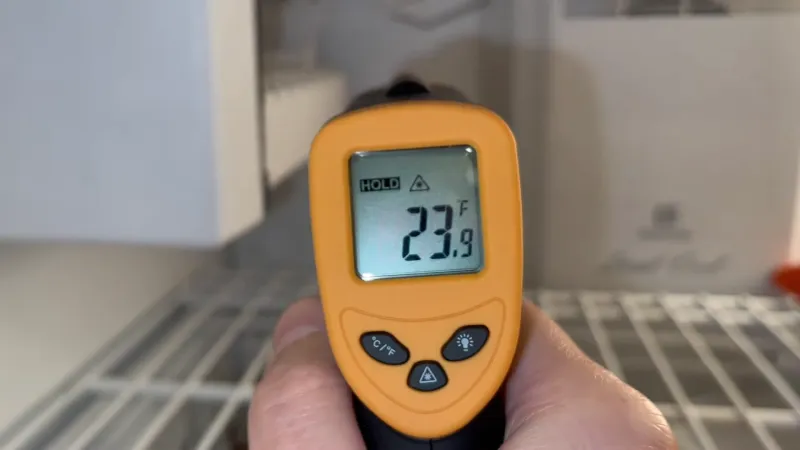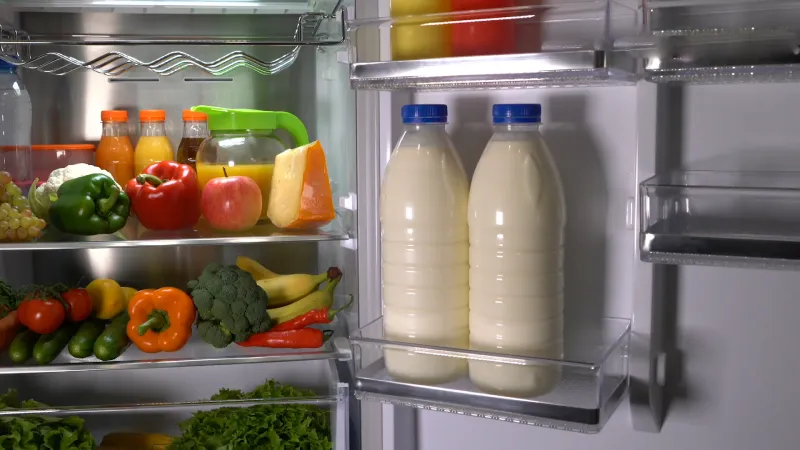Cascade Refrigeration System Problems With Solutions
Cascade refrigeration systems are essential components in various industries as they allow for low temperature operation with high energy efficiency. However, as with any complex system, cascade refrigeration systems can experience problems that affect their performance and efficiency.
In this article, we will provide an overview of five common problems that can occur in cascade refrigeration systems and the solutions to resolve them. Understanding these issues and the available solutions can help to ensure the smooth and efficient operation of the cascade refrigeration system.
You'll Learn About
Cascade Refrigeration System Problems With Solutions
Cascade refrigeration systems can experience various problems, some of which include:
Room Temperature Warm
Lack of refrigerant in the system can cause the room to be warm. This can be solved by adding more refrigerant.
Blocked Filter
A blocked filter at the drier or expansion valve can cause issues. This can be solved by cleaning or replacing the filter.
Evaporator Inlet Solenoid
If the evaporator inlet solenoid is closed, it can cause problems. This can be solved by opening the solenoid.
Condenser Fan Motor
If the condenser fan motor is not functioning properly, it can cause less heat transfer, leading to problems. This can be solved by repairing or replacing the motor.
Defrosting Element
If the defrosting element is still operational, it can cause problems. This can be solved by disabling or replacing the element.
In general, it is important to regularly maintain and inspect the cascade refrigeration system to avoid these problems and ensure efficient and effective operation.
Problem 1: Room Temperature Warm

One of the most common problems in a cascade refrigeration system is when the room temperature becomes warm. This is usually due to a lack of refrigerant in the system.
Refrigerant is essential in a refrigeration system as it removes heat from the refrigerated space and transfers it outside. When there is not enough refrigerant in the system, the refrigerant’s ability to transfer heat is diminished, leading to a warm room temperature.
Solution: Add More Refrigerant
In addition to adding refrigerant, the technician should also check for leaks in the system as this could be the cause of the low refrigerant levels. A refrigerant leak not only reduces the efficiency of the system, but it can also be harmful to the environment. The technician will repair any leaks found and add refrigerant to the system to ensure that it is running smoothly.
Problem 2: Blocked Filter
Another common problem in cascade refrigeration systems is a blocked filter. The filter is an important component in the system as it removes debris and contaminants from the refrigerant, ensuring its smooth and efficient flow.
When the filter becomes clogged with debris and contaminants, the flow of refrigerant is restricted, reducing the system’s ability to transfer heat and leading to a warm room temperature.
Solution: Clean or Replace Filter
In addition to the filter, the technician should also inspect other components of the system, such as the evaporator, condenser, and expansion valve, for any signs of damage or wear. These components play a crucial role in the refrigeration process and should be in good condition for the system to operate efficiently.
Any damaged components should be repaired or replaced to ensure the smooth operation of the cascade refrigeration system.
Problem 3: Evaporator Inlet Solenoid
The evaporator inlet solenoid is a valve that regulates the flow of refrigerant into the evaporator. If the solenoid is closed, the refrigerant will not be able to flow into the evaporator, causing the room temperature to rise.
The solenoid may close due to a malfunction in the solenoid or a failure in the electrical control system.
Solution: Open Solenoid
In addition to the solenoid, the technician should also inspect the refrigerant level in the system to ensure that it is at the correct level. If the refrigerant level is too low, the system will not be able to transfer heat efficiently, causing the room temperature to rise. The technician should add refrigerant as needed to ensure that the system is operating at the correct level.
Regular maintenance and inspection of the cascade refrigeration system is important to prevent problems and ensure its efficient operation. The technician should check the refrigerant level, inspect the filter, and inspect the electrical control system on a regular basis to prevent problems and ensure that the system is operating efficiently.
Problem 4: Condenser Fan Motor
The condenser fan motor is responsible for circulating air through the condenser to dissipate heat and maintain the refrigerant at its condensing temperature.
If the fan motor stops working, the refrigerant will not be able to properly condense, leading to a decreased refrigeration effect and decreased efficiency of the cascade refrigeration system. Additionally, the compressor may become overworked, leading to further problems.
Solution: Repair or Replace Motor
You should inspect the condenser fan motor to determine whether it is working properly. If the motor is operating, the refrigerant is in the correct condition, and the electric control system is functioning properly, the condenser fan motor may be causing too much stress on the fan and motor bearings. The technician may need to replace the motor with a larger motor to alleviate the excess stress on the motor.
Additionally, the fan blade may be damaged, causing the fan to vibrate and possibly become disengaged from the fan motor. If the fan blade is damaged or has become disengaged, the technician will need to replace the fan.
Problem 5: Defrosting Element
The defrosting element is responsible for removing any frost buildup on the evaporator coils. If the defrosting element remains operational while the system is in cooling mode, it can lead to a decrease in the refrigeration effect and efficiency of the cascade refrigeration system.
Additionally, the frost buildup on the evaporator coils can restrict air flow and further decrease the refrigeration effect.
Solution: Disable or Replace Element
The technician should inspect the defrosting element to determine whether it is operating properly. If the element is working, the technician will need to look at the system for any causes of excess ice buildup. The system may be not be operating efficiently enough to keep up with the level of moisture in the air, leading to ice buildup and frost buildup on the evaporator coils.
Additionally, the evaporator fan may be not working properly, or the defrost timer may not be in the correct setting. The technician will need to perform the following checks:
- Check the motor of the evaporator fan for proper operation.
- Check the defrost timer to ensure it is in the correct setting.
- Check the control board to ensure the defrost timer is set correctly.
Problem 6: Evaporator Tube
The evaporator tube is the main part of the evaporator that distributes the refrigerant throughout the refrigerated space. If the evaporator tube becomes damaged, the refrigerant will not be able to adequately transfer heat to the room and cause the room temperature to become warm.
Solution: Repair or Replace Tube
The technician should inspect the evaporator tube for any signs of damage. The evaporator tube may have become damaged due to frost buildup, the coil becoming bent, or from the moving parts inside the evaporator overheating.
The technician will need to examine the evaporator tube to determine whether the tube is the cause of the warm room temperature. The technician will need to replace the damaged evaporator tube to ensure the smooth operation of the refrigeration system.
Problem 7: Condenser Tube
The condenser tube is the main part of the condenser that transfers heat from the refrigerated space to the outside environment. If the condenser tube becomes damaged, the refrigerant will not be able to adequately remove heat from the refrigerated space, leading to a warm room temperature.
Additionally, the condenser fan will not be able to adequately transfer the heat outside the refrigerated space, causing the room temperature to become hotter.
Solution: Repair or Replace Tube
The technician should inspect the condenser tube to determine if the tube is the cause of the warm room temperature. The tube may have become damaged due to frost buildup, the coil becoming bent, or from the moving parts inside the condenser overheating.
The technician will need to examine the condenser tube to determine whether the tube is the cause of the warm room temperature. The technician will need to replace the damaged condenser tube to ensure the smooth operation of the refrigeration system.
Problem 8: Evaporator Condenser Vanes
The evaporator and condenser are located on the bottom of the refrigeration system. If the evaporator and condenser become damaged, the refrigerant will not be able to properly transfer heat, leading to a warm room temperature.
The evaporator and condenser are both covered by air filters to prevent dust and debris from entering the refrigerant. If the filters become clogged, the efficiency of the system will be decreased and the refrigerant will not be able to remove heat as efficiently as it should.
Solution: Clean or Replace Filter
The technician should inspect the air filters to ensure that they are in proper condition. If the filters are not in good condition, the technician should replace them.
In addition to the filters, the technician should inspect other components, such as the evaporator, condenser, and expansion valve, to ensure that they are in good condition. These components play a crucial role in the refrigeration process and should be in good condition for the system to operate efficiently.
Regular maintenance and inspection of the cascade refrigeration system is important to prevent problems and ensure its efficient operation.

Final Words
Cascade refrigeration systems are a great and affordable cooling system that provides efficient operation. These refrigeration systems should only be serviced by a licensed professional.
Cascade refrigeration systems are complex and can face issues like compressor failure, refrigerant leaks, or temperature inconsistencies. Regular maintenance and timely repairs are crucial to keep the system running efficiently. If you notice problems, it’s best to consult a professional to avoid further damage.
For more insights into refrigeration systems, explore our guide on Dimchae kimchi refrigerator problems to understand common issues and solutions. Additionally, if you’re dealing with an RV, our article on Dometic RV refrigerator problems can provide valuable troubleshooting tips. For those with dual evaporator systems, check out our guide on dual evaporator refrigerator problems.
